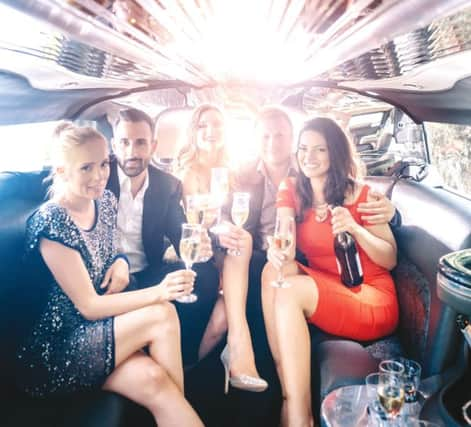The changing face of modern matrimony


Attitudes to marriage have changed massively over recent years, with love seemingly being favoured over starting a family as the main reason for people to get hitched.
Although it was remarkably not so long ago that society frowned upon couples having a family outside of wedlock and expected a husband to be the breadwinner, while his wife kept the home running and children growing healthily.
Advertisement
Hide AdAdvertisement
Hide AdA British Social Attitudes (BSA) survey, carried out between 1984 and 2012 by London-based NatCen Social Research, showed that in 1989 no less than one quarter of the UK public thought tying that the knot was a must for couples who wanted to have offspring.
Thankfully, that figure had dropped to just 3 per cent by 2012 and two years later same-sex marriage was legalised in Scotland, with public debate on the subject, among others, being key to “changes in Britain’s marital behaviour”, according to the authors of the BSA study.
So, with marriage no longer being seen as the basis of family life, men and women are prioritising careers and travel in their twenties, allowing brides and grooms up and down the country to say “I do” at almost any point in their lives.
In fact, the average age of a bride is now 32, and 33 for grooms, an increase of ten years since 1975, according to the Scottish Government.
Michelle Hall, a wedding manager at Gretna Green in Dumfries and Galloway, who has been planning weddings there for almost 15 years, has witnessed one major consequence of this upward shift, saying that parents are no longer expected to foot the wedding bill, which allows couples the freedom to make the day all their own.
Gretna Green, of course, has been made famous historically by young couples eloping from south of the Border to the handily situated destination to avoid stricter marriage laws in England.
Hall says: “Regardless of whether or not you had spent time with an aunt or uncle, in the past, they would be invited to the wedding by parents.
“Now, in a make up of maybe 30 guests at a wedding, when the parents are there, perhaps siblings are, and the rest of the party is made up of the couples’ friends.
Advertisement
Hide AdAdvertisement
Hide Ad“That’s probably a result of many couples relying heavily on friendships to help them out if, perhaps they have children already, which is very different to how it was years ago. They build up a connection with friends who are part of their children’s lives.”
Hall points to author Rachaele Hambleton, best known for her book, Part-Time Working Mummy, who recently did the marriage deed at Gretna Green.
With three daughters and two step sons, Hambleton affectionately makes reference to her “patchwork family”.
The writer has gathered more than 500,000 followers on social media as a result of her honesty and for being a great example of a modern mum juggling contemporary life with humour and humanity.
Hall says: “A lot of these patchwork families, as she calls them, they don’t have a lot of time, they are juggling childcare. They have a lot of considerations to take in regarding when they can marry with school holidays, etc.
“But [Hambleton] showed people that they could just go to Gretna Green at the weekend with their family to get married. Her’s was a very intimate ceremony and they were a fabulous family to work with.”
Although many couples are now opting for a smaller celebration, that doesn’t necessarily mean it is a cheaper option.
Cash is now more likely to be splashed on a much more exclusive and bespoke venue, with cocktails and champagne served on arrival and gifts for the whole wedding party rather than just the bridesmaids and best man –should they choose to have any.
Advertisement
Hide AdAdvertisement
Hide AdA hot topic last year was, of course, Prince Harry and Megan Markle’s big day and, notably, the Duchess of Sussex chose not to have any adult bridesmaids.
In an increasingly open and equal society, bridesmen and groomswomen are being called upon to help the happy couple through their wedding journey and an all-important tradition is arranging the stag and hen “dos”.
These days, couples tend to share friends, already live together and place an increased value on booking time off work, so many are combining pre-wedding celebrations into so-called “Sten” or “Hag” events.
Whether they choose to combine the celebrations or go for more traditional but separate dos, these days couples can celebrate their love for each other in almost any way they want, free from the outdated and strict social rules of yesteryear.
Hall adds: “People tend to do it their way, so it can be just a couple with a best man and a bridesmaid or a couple who is a friend of both of theirs. It might even just be the couple’s children who stand in as best man and bridesmaid, but there is a real mix.
“If it is a bigger wedding, a couple might want to know how the top table is set out, how they should cut the cake.
“You might even have a couple who have been together for 20 years but, who think it is bad luck to see each other the night before.
“These days, it all just comes down to individual choice really.”